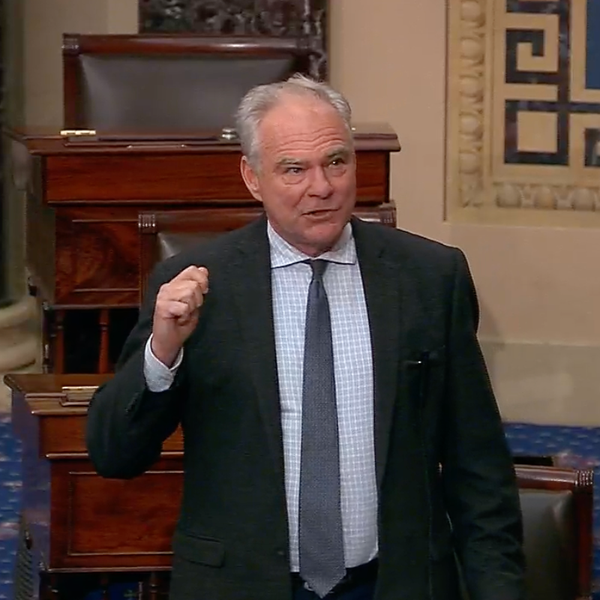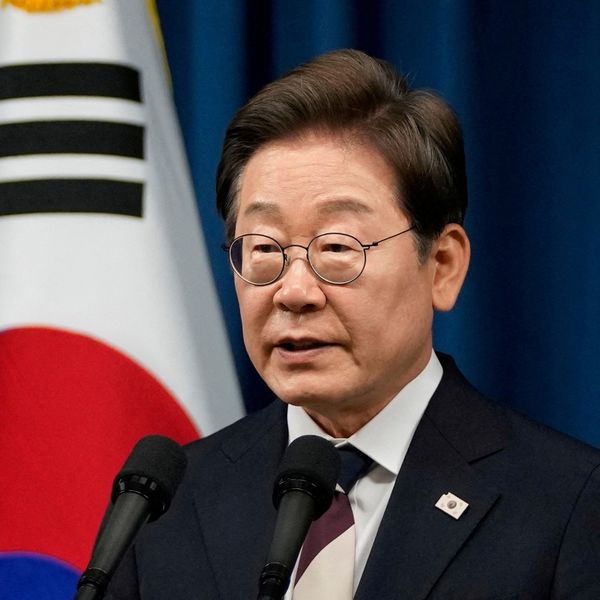The failure of successive U.S. administrations to distinguish between core and peripheral national security interests lies at the heart of much of the trouble that we now face.
Nowhere is this failure of discernment clearer than in the Biden administration’s 2022 National Security Strategy, which laid out an ambitious two front Cold War strategy that seeks to simultaneously staunch China’s rise in the East while countering Russian revanchism in the West. It defines the emerging world order as one in which “Democracies and autocracies are engaged in a contest to show which system of governance can best deliver for their people and the world.”
Close observers of U.S. foreign policy over the past three years might be forgiven for wondering whether the administration has succeeded in achieving any of the particular goals it has set for itself. But in fairness to the Biden administration, such failures have become commonplace over the past 30 years.
The journalist and editor Lewis Lapham noted as far back as 2002 that, “The makers of America’s foreign policy over the course of the previous fifty years have embraced a dream of power almost as vainglorious as the one that rallied the disciples of Osama bin Laden to the banner of jihad.”
In the 20 years since Lapham wrote those words, the U.S. has stumbled into multiple foreign policy disasters, including but not limited to the needless and counterproductive regime change operations in Libya and Syria, the failed nation-building enterprises in Afghanistan and Iraq, and the current NATO-Russia standoff in Ukraine.
Surely then, the time has arrived for a policy of retrenchment and a shift toward an approach based on a hemispheric conception of U.S. national security.
The old way of doing business has failed: Eighty years after the end of the Second World War, the U.S. has nearly 800 military bases and outposts spanning the globe; an annual national security budget of over $1 trillion; and formal bilateral defense commitments to 69 countries.
Still more, the U.S. has seemingly committed itself to the security and prosperity of countries to which it is not treaty bound, such as Israel and Ukraine.
The dangers of American overextension and Washington’s desire to remake the world in its self-image have been apparent for decades.
For generations, revered analysts and thinkers across a wide range of the political spectrum — including George F. Kennan, George Ball, William Pfaff, Reinhold Niebuhr, Walter Lippmann, Ronald Steel, Jack Matlock, Chas Freeman and John Mearsheimer — have been sounding the alarm.
Yet our professional political class has been unwilling or unable to consider common-sense alternatives to the so-called “grand strategy” of American global hegemony laid out by Paul Wolfowitz in 1992.
It was then, as under secretary for policy at the Pentagon, that Wolfowitz authored the Defense Planning Guidance, which posited that “If necessary, the United States must be prepared to take unilateral action” in order “to prevent the re-emergence of a new rival.”
The new defense strategy, wrote Wolfowitz,
“….requires that we endeavor to prevent any hostile power from dominating a region whose resources would, under consolidated control, be sufficient to generate global power. These regions include Western Europe, East Asia, the territory of the former Soviet Union, and Southwest Asia.”
In a curious twist of history, though Wolfowitz's doctrine was savaged by the press and publicly disavowed by the administration at the time, in the years that followed, little by little (under Bill Clinton) and then all at once (under George W. Bush) his vision became the cornerstone of U.S. national security policy. In the same way that George Kennan’s Long Telegram set the template for U.S. policy during the 40-year Cold War, Wolfowitz’s doctrine of global primacy set the agenda for the post-Cold War world.
Thirty years of Wolfowitz has been more than enough, thank you.
As the world continues to evolve and the center of gravity moves from the North Atlantic to Eurasia and the Global South, Washington would surely be better served if it abandoned its global pretensions and focused on securing its own neighborhood in the Western Hemisphere.
The U.S. can and should pursue a national security policy that abjures the costly strategy of U.S. military forward presence and brings American troops home. After all, as the decorated US Army Colonel (ret.) Douglas Macgregor has pointed out, “Forward presence actually discourages ‘allies’ and ‘partners’ from taking full responsibility for their own defense. In an age dominated by precision guided intelligence, surveillance, reconnaissance-strike systems any forward presence force — aerospace, maritime, or ground — risks annihilation in the opening phase of any peer or near-peer enemy attack.”
As has been said many times over, Europe is plenty capable of looking after itself both economically and militarily. Eighty years after the end of the Second World War, the U.S. should finally cede guardianship over matters relating to European security. Recall that as far back as 1958, President Dwight D. Eisenhower expressed his frustration with Europe’s stubborn unwillingness to look after itself. According to the historian William R. Keylor, Eisenhower believed it was high time to to “wean” the Allies from their excessive dependence on the U.S. “and encourage them to make better efforts of their own.”
The benefits of a less Euro-centric security policy are only too clear in light of current events. Given the emerging geopolitical realities in Asia, the U.S. might usefully rethink its posture in Europe. One way to signal to the Europeans that the time has come for them to stand on their own would be to open for the first time in NATO’s history the position of Supreme Allied Commander in Europe (SACEUR) to non-Americans. While a full withdrawal from the alliance seems highly unlikely in the near to medium term, other options remain, such as drawing down the number of U.S. military personnel in Europe, currently estimated at 100,000. Such a shift would perhaps allay Russia’s fears (and belligerence) regarding the North Atlantic alliance, and could provide an opening for the Europeans to at long last craft a new, comprehensive security architecture that takes into account the security interests of all of Europe.
Indeed, such a shift would allow the U.S. to deploy its resources to the Western Hemisphere. One way to do so would be to use the 2020 U.S.-Mexico-Canada Agreement (USMCA) as a framework to implement mutual defense provisions between the three nations - with an eye toward expanding it to other strategically relevant countries, such as Panama and Colombia.
A hemispheric alliance stretching from the Arctic to the Panama Canal might reasonably be coupled with a New Marshall Plan for Latin America in order to win hearts and minds and to help address the scourge of drug and human trafficking that has long afflicted the region. After all, shouldn’t securing the American border take priority over securing Ukraine’s?
There is little doubt that proposals such as these will give rise to accusations of promoting isolationism — or worse. So be it.
The fact is that U.S. national security strategy has too often left us at the mercy of client states from Taiwan to Ukraine to Georgia to Israel: States that are all too eager to leverage, with the relentless agitation of their large and well-funded domestic lobbies, American largess and military might in disputes that have little if anything to do with the actual security of the United States.
A hemispheric posture would allow the U.S. to finally, three decades after the end of the Cold War, redirect our sorely needed resources back to where they belong: the American people.















